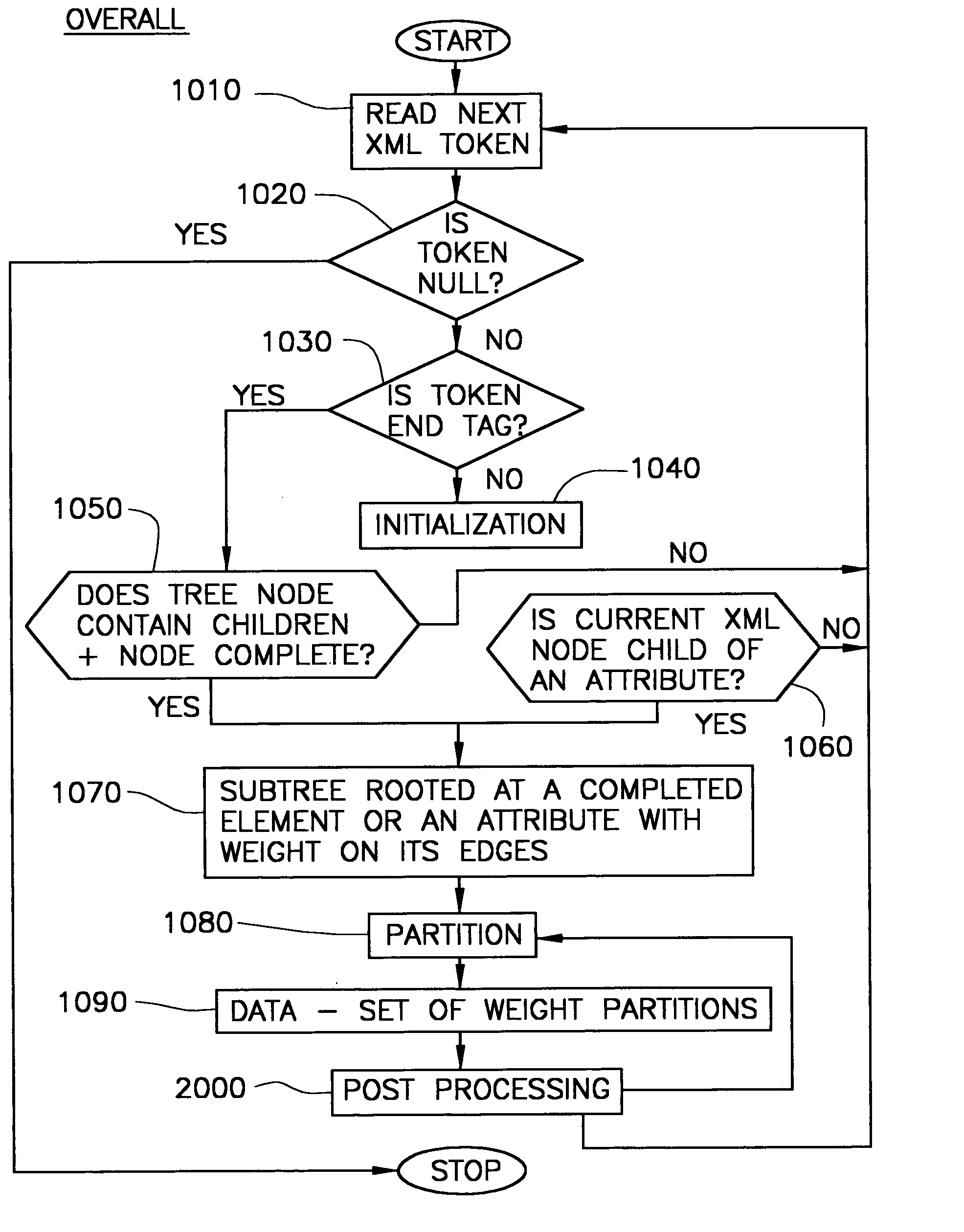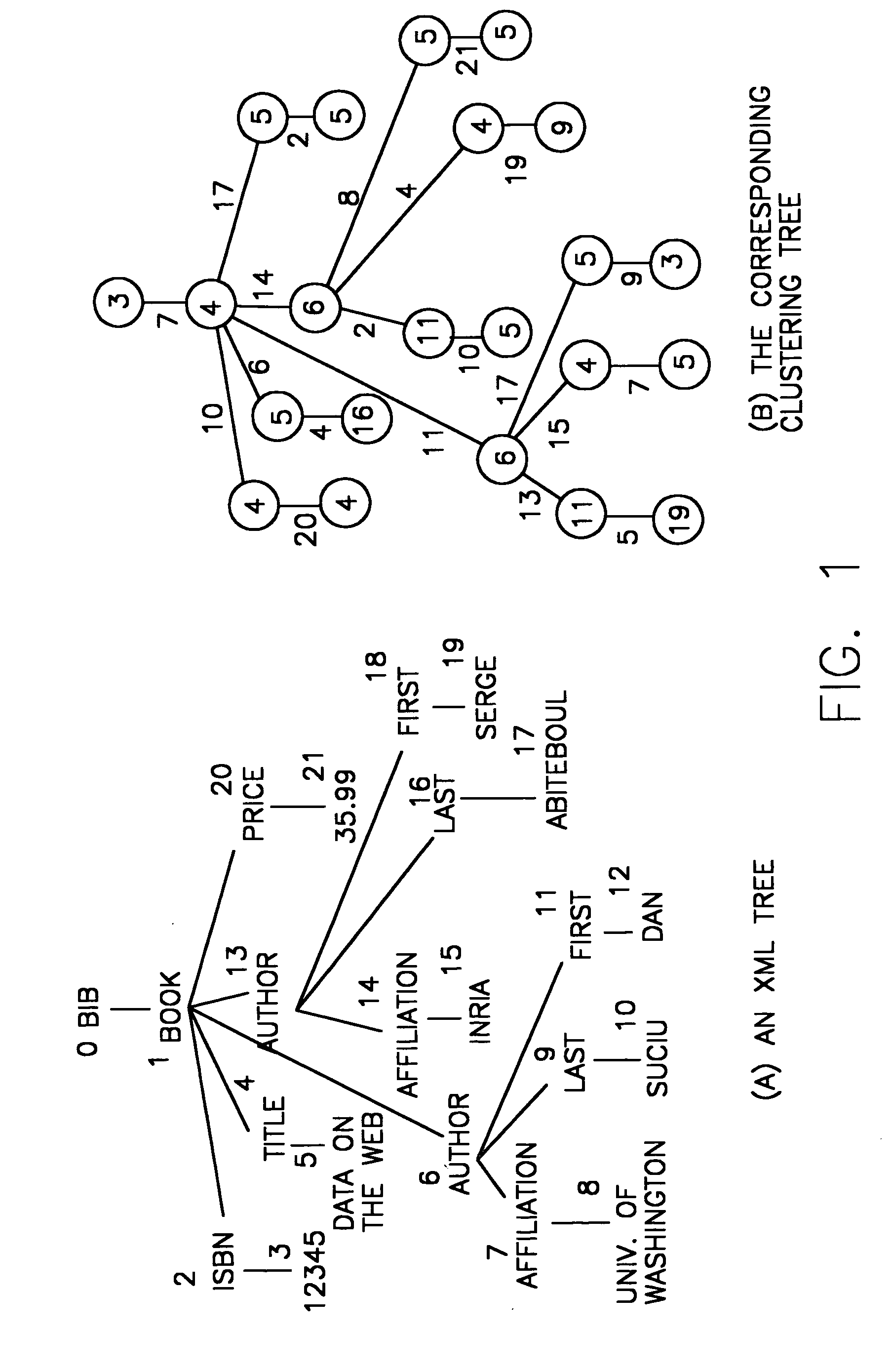Single pass workload directed clustering of XML documents
a single-pass workload and clustering technology, applied in the field of single-pass workload directed clustering of xml documents, can solve the problems of deferred access, inability to completely eliminate path indexes, and high cost of maintaining multiple path indexes to cover the entire xml documen
- Summary
- Abstract
- Description
- Claims
- Application Information
AI Technical Summary
Benefits of technology
Problems solved by technology
Method used
Image
Examples
Embodiment Construction
[0024] One embodiment of the present invention is a tree partitioning method, XC, which is used for clustering large static XML documents. In another embodiment of the present invention, XC is preferably integrated in a system with a SAX parser and an edge-weight assigner (using explicit weights or deriving weights from a declarative workload specification), in which the workload is fixed. The system, on-the-fly, generates a clustering tree containing the completed nodes of the XML document. As described below, XC uses various techniques for retaining only those clusters and partitions that could be useful in the future and frees all remaining data structures as soon as possible.
[0025] The disclosure now turns to a discussion of the key features of XC. For the purpose of discussion, the simple XML tree illustrated in FIG. 1(a) will be used. FIG. 1(b) presents the corresponding clustering tree (with node and edge weights). The clustering tree is the XML tree augmented with node and ...
PUM
 Login to View More
Login to View More Abstract
Description
Claims
Application Information
 Login to View More
Login to View More - R&D
- Intellectual Property
- Life Sciences
- Materials
- Tech Scout
- Unparalleled Data Quality
- Higher Quality Content
- 60% Fewer Hallucinations
Browse by: Latest US Patents, China's latest patents, Technical Efficacy Thesaurus, Application Domain, Technology Topic, Popular Technical Reports.
© 2025 PatSnap. All rights reserved.Legal|Privacy policy|Modern Slavery Act Transparency Statement|Sitemap|About US| Contact US: help@patsnap.com



